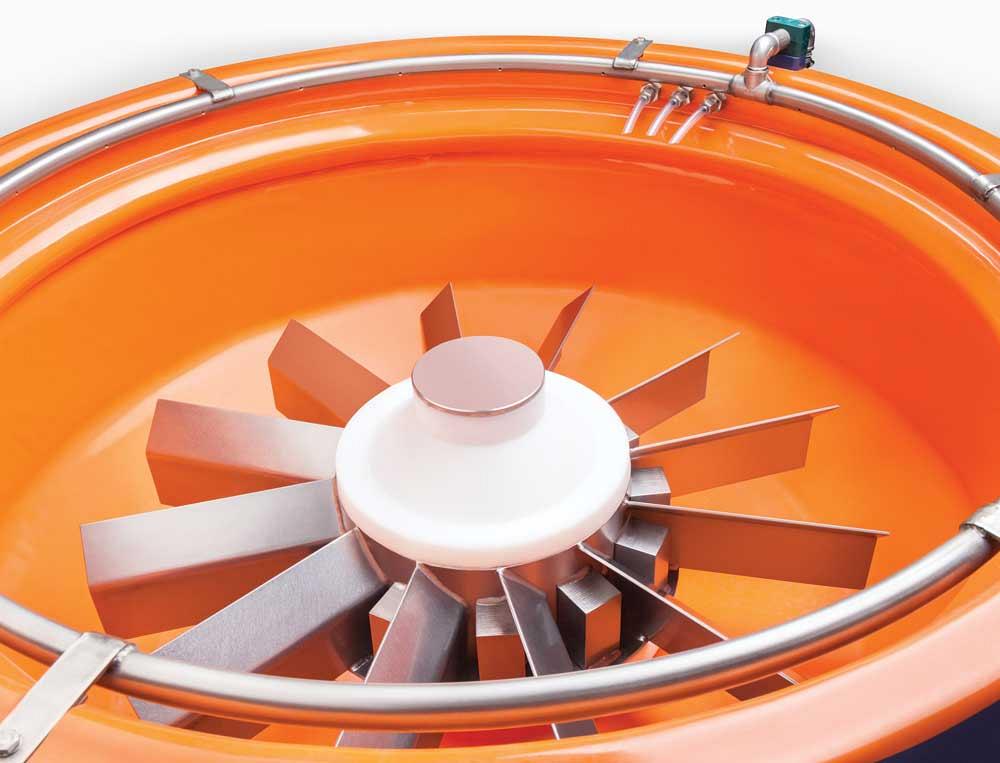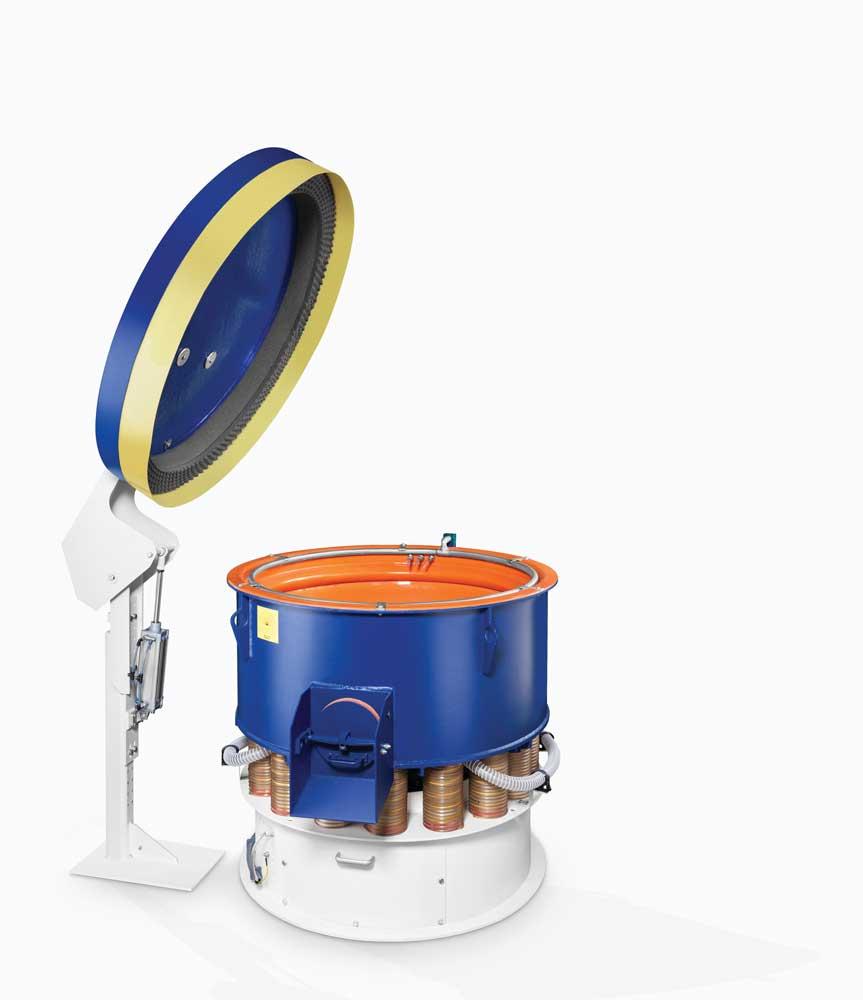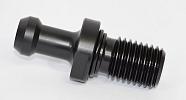- FMA
- The Fabricator
- FABTECH
- Canadian Metalworking
Technology Spotlight: A smooth finish for blisks
Automated vibratory units provide quick, consistent finishes
- March 15, 2018
- Article
- Metalworking

Blisks up to 980 mm in diameter can be secured in the bowl of the CM vibratory system for deburring and finishing.
The surface finish of a blisk, a blade-integrated disc, is critical to its performance. As a blisk rotates, a smooth, consistent surface is necessary to create maximum airflow that can affect overall efficiency, fuel consumption, and noise emissions, all important whether the final product is incorporated into a jet engine or any other turbine application.
Achieving a smooth finish on a complex blisk shape has been a time-intensive process typically accomplished using manually operated grinding discs and other hand-operated tools. Christoph Cruse, sales director at Walther Trowal, said the manual process was inefficient, the configuration of the tools used could make it difficult to reach all surfaces to create a uniform finish, and it left room for human error.
“Manufacturers were searching for a process to eliminate the manual work involved in blisk finishing and reduce processing times. And, finishing by hand always implies the human factor with all its risks. This is a problem, in particular, in the aerospace industry,” he said.
This desire for efficiency and consistency prompted the turbine manufacturers to work with the company to develop an automated system for finishing blisks. A redesign of an established rotary vibrator that deburrs and finishes small workpieces was the result of the cooperation. In the original vibratory machine, components and the abrasive media are placed in the bowl. The vibration process agitates the parts, which float loosely within the abrasive media.
The redesign to accommodate the larger components incorporated two main changes. The domed lid was replaced with a shortened, flat lid, and a method to secure the part within the bowl of the unit was developed. “By basically eliminating the dome it became possible to mount one blisk with a diameter up to 980 mm in the centre of the machine’s bowl,” said Cruse.
In the new CM vibratory system, a single workpiece is attached to a mount in the center of the processing bowl. The bowl is filled with the abrasive that surrounds the part and the sound-deadening lid is closed, and a motor vibrates the entire unit. During vibration, the abrasive media rubs against all surfaces of the fixed workpiece. The uniform action provides a smooth, even, polished finish on all surfaces.
According to the manufacturer, an initial surface finish of Ra = 4.0 to 5.0 µm can be reduced to between Ra = 0.2 to 0.4 µm in about five to six hours.
Cruse said, “Automatic systems guarantee that the entire surface of the blisk is evenly treated. In addition, the automatic finishing system is considerably faster, in some cases reducing processing time from days to hours. The finishing movement between the part and the abrasive chips is more efficient than manual finishing.”
The CM vibratory system, sized to fit in a small footprint, has a diameter of 1,450 mm.The company recommends using a plastic abrasive media like its V 2030, which is approved for many aerospace applications and provides a gentle finishing process. Cruse said that type of media produces the best finish, retains its shape as it wears down, and has a relatively low attrition rate.
In reviewing the results of the cooperative efforts between Walther Trowal and the blisk manufacturers, Cruse said, “Any manual manufacturing operation must be viewed with great skepticism because the quality of the work will vary greatly. That is especially true for the production of turbine components. The CM vibratory system has completely eliminated vagaries of the human factor, as well as reduced finishing time from days to hours.”
Walther Trowal GmbH & Co., www.walther-trowal.de
subscribe now


Keep up to date with the latest news, events, and technology for all things metal from our pair of monthly magazines written specifically for Canadian manufacturers!
Start Your Free Subscription- Industry Events
MME Saskatoon
- May 28, 2024
- Saskatoon, SK Canada
CME's Health & Safety Symposium for Manufacturers
- May 29, 2024
- Mississauga, ON Canada
DiPaolo Machine Tools Open House 2024
- June 4 - 5, 2024
- Mississauga, ON Canada
FABTECH Canada
- June 11 - 13, 2024
- Toronto, ON Canada
Zoller Open House & Technology Days 2024
- June 12 - 13, 2024
- Ann Arbor, MI





















